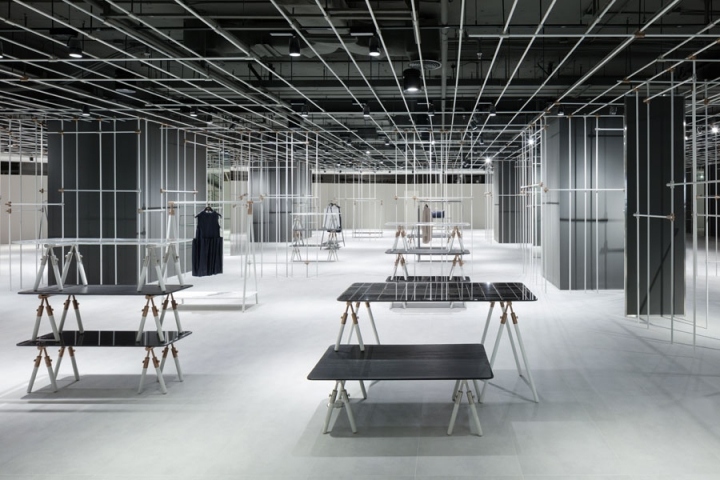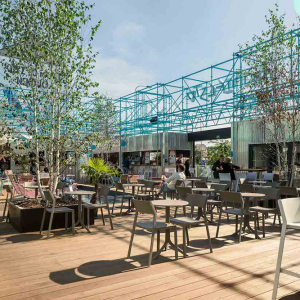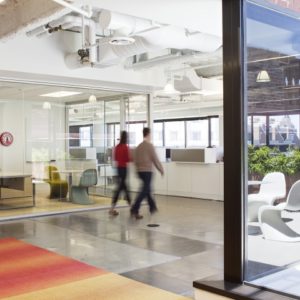


BANGKOK – Among the most powerful retail developers in Thailand, Siam Piat revealed the facelift of one of its enterprises in May. Aspiring to change the retail game, Siam Discovery is a 40,000-m2 shopping complex, whose US$112 million redevelopment was carried out by Nendo, together with local architecture firm Urban.

Siam Discovery first opened its doors 18 years ago and quickly became the first stop in Thailand for foreign brands. The retail realm changed, however, with the advent of e-commerce; people can buy almost anything online at any time by barely lifting a finger. Add that to the fact that there are an estimated 120-plus shopping malls in Bangkok alone. The formula needed to change.

The brainchild of Chadatip Chutrakul, CEO of Siam Piat, Siam Discovery subverts traditional merchandising. A core ambition is to influence how consumers connect with products. ‘It’s less about shopping and more about discovering,’ says Chutrakul. ‘We’re not aiming to simply present products and fashion to our clientele. Young people don’t need that. They can shop on their mobile devices and computers. Millennials visit places because they want to express themselves, to meet new friends with similar interests and to engage with society.’

In other words, young people want products that trigger an emotional response and relate to their lifestyles. To win the hearts of millennials, Nendo came up with the concept of a Lifestyle Laboratory. Merchandise is categorized in such a way that people can view products as an extension of their daily lives. The ground-floor Her Lab houses female-orientated products, while men are directed towards His Lab on the level above. The latter stocks everything from coveted Japanese fashion brand Factotum to luggage label Rimowa. Footwear from usual suspects like Adidas and Nike congregates with Levi’s and more on the first floor, while electronic devices and home appliances are located in the second-floor Digital Lab. Occupying the third-floor Creative Lab are furniture and home accessories, including popular brands like Tom Dixon and Hay. The fourth floor is where things get more conceptual: Play Lab offers shoppers a chance to work with greenery, mix a fragrance or have a lipstick made to match their skin tone.

Similar categorizations may have been adopted by other department stores to some extent, but Siam Discovery stands out for its integration of digital technology into the physical experience. To allow tech-savvy consumers to relate personally to its products, Siam Discovery introduced a special smartphone app that divulges details such a brand’s backstory. The app uses location-based services to notify users of the latest offerings and discounts as they approach an area of interest; these features are estimated to increase purchases by up to 45 per cent.
Furthermore, 80 per cent of the merchandise – which comprises 5,000 brands, both international and domestic – will be self-curated in dedicated retail zones. Around 30 per cent of the items will be changed regularly to satisfy the younger generation’s appetite for novelty. Integrating digital technology to track purchasing habits and preferences will be crucial to the new strategy. ‘We want customers to come back again and again,’ says Chutrakul, ‘because there’s always something new to be found.’
When it comes to telling stories in an engaging way – communicating Chutrakul’s vision of assisting customers with their lifestyle choices and providing an enticing experience – few can rival Oki Sato of Nendo. Sato, who supervised the redesign of both interior and exterior, stacked 202 open-sided metal ‘boxes’ in the atrium, which spans the ground floor to the fourth level. The gesture is a metaphor for the ever-rolling merchandise, the stockists – and the overall experience.
Even for Sato, whose department-store refurbishments include La Rinascente in Milan, the scale and complexity of the Bangkok project posed a challenge. He was confronted with a narrow entrance that hindered the flow of people coming into the store, even though it’s on one of Bangkok’s busiest streets. The existing structure also had several open ceilings, which masked views to the upper levels. To draw visitors into the emporium and beyond, Sato needed to control the horizontal and vertical circulation. ‘My mind became tangled at one point while figuring out how to direct the traffic,’ he says. In the end, the designer devised a promenade that furnishes a dramatic vista all the way to the top of the four-storey atrium. The approach stirs visitors’ expectations of what’s to come. Nendo also facilitated the flow of customers in each area by placing lifts in various spots rather than in a single cluster. The layout seems to usher people from one edge of a floor to the other while locating a lift.
The situation is Bangkok is rather unique, as the city claims to be the top shopping destination for travellers arriving from Singapore, Indonesia and the Philippines. There is still a growing market, however, for commercial complexes in which you can buy everything in one place, from stationery and clothing to bikes, plants and even drones. Siam Discovery received a welcome fanfare befitting its innovative retail concept, but the real challenge lies ahead. One vital question is whether the digital app and the staff involved in its success can satisfy users who expect instant information and quick updates from Bangkok’s shopping spectacle.
Designer: Nendo & Urban
Photography: Takumi-Ota





Add to collection










